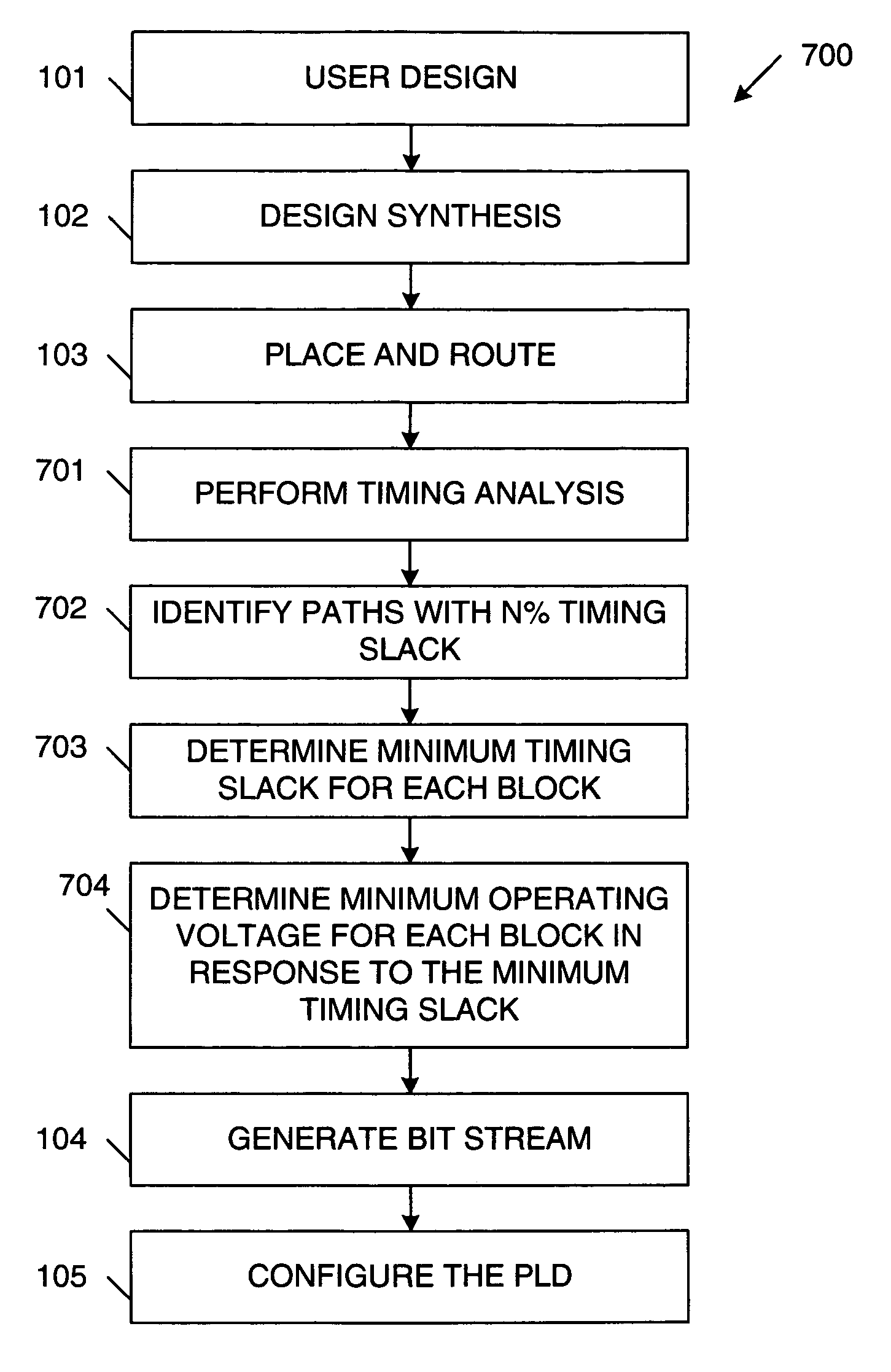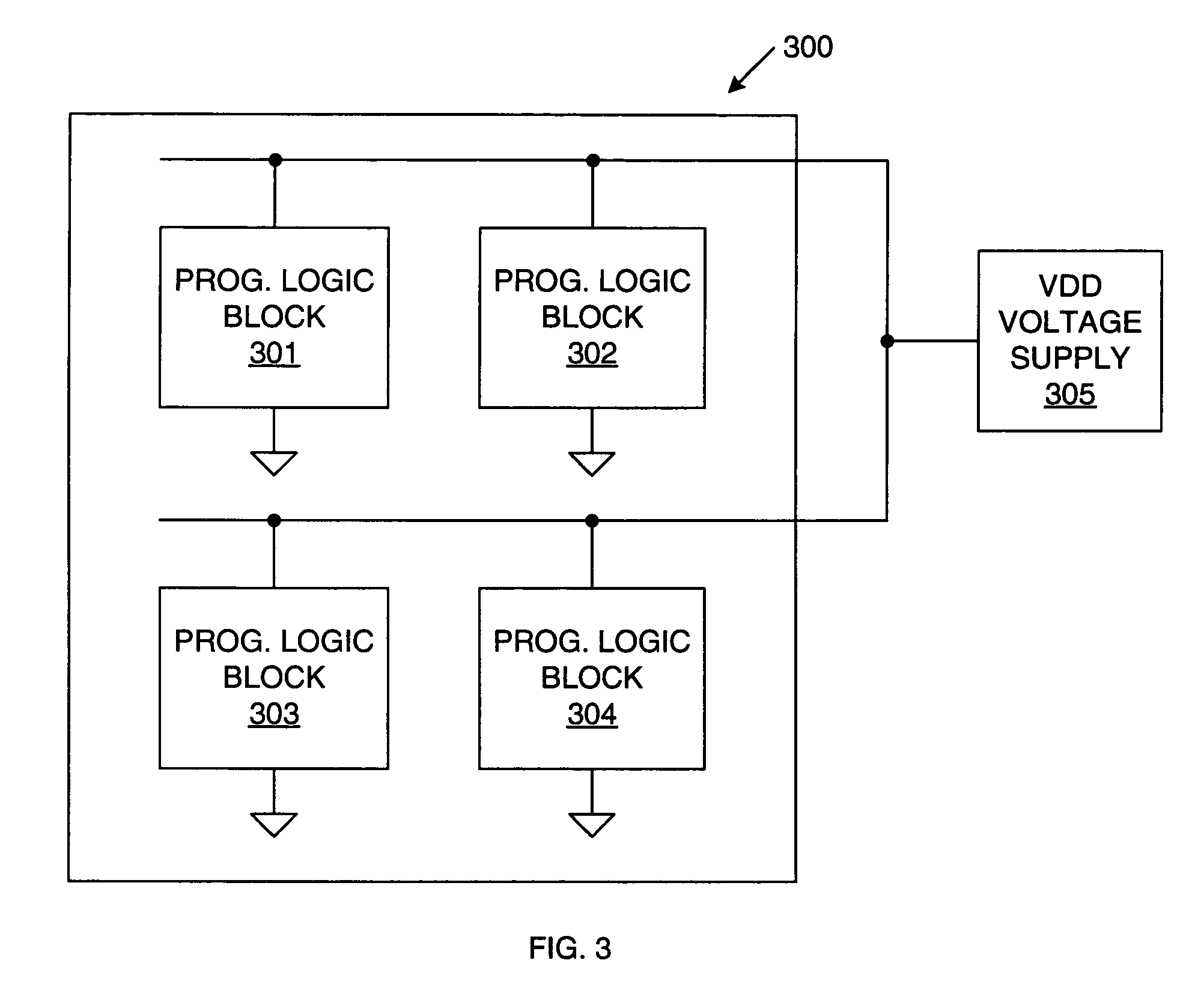Tuning programmable logic devices for low-power design implementation
a programmable logic and design implementation technology, applied in the direction of power consumption reduction, pulse technique, instruments, etc., can solve the problems of significantly higher static significantly higher dynamic power consumption of programmable logic devices, and unused resources still consuming static power, so as to achieve the effect of reducing power consumption
- Summary
- Abstract
- Description
- Claims
- Application Information
AI Technical Summary
Benefits of technology
Problems solved by technology
Method used
Image
Examples
Embodiment Construction
[0028]In accordance with one embodiment of the present invention, unused and inactive resources in a programmable logic device (PLD), such as a field programmable gate array (FPGA), are disabled to achieve lower static power consumption. The present invention includes both an enabling software flow and an enabling hardware architecture, which are described in more detail below. Unused resources of the PLD can be disabled when designing a particular circuit to be implemented by the PLD (hereinafter referred to as “design time”). In addition, resources of the PLD that are temporarily inactive can be disabled during operation of the PLD (hereinafter referred to as “run time”).
[0029]FIG. 1 is a flow diagram 100 illustrating a conventional design flow used for PLDs. Initially, a user designs a circuit to be implemented by the PLD (Step 101). This user design is described in a high-level specification, such as Verilog or VHDL. The high-level specification is first synthesized to basic log...
PUM
 Login to View More
Login to View More Abstract
Description
Claims
Application Information
 Login to View More
Login to View More - R&D
- Intellectual Property
- Life Sciences
- Materials
- Tech Scout
- Unparalleled Data Quality
- Higher Quality Content
- 60% Fewer Hallucinations
Browse by: Latest US Patents, China's latest patents, Technical Efficacy Thesaurus, Application Domain, Technology Topic, Popular Technical Reports.
© 2025 PatSnap. All rights reserved.Legal|Privacy policy|Modern Slavery Act Transparency Statement|Sitemap|About US| Contact US: help@patsnap.com



